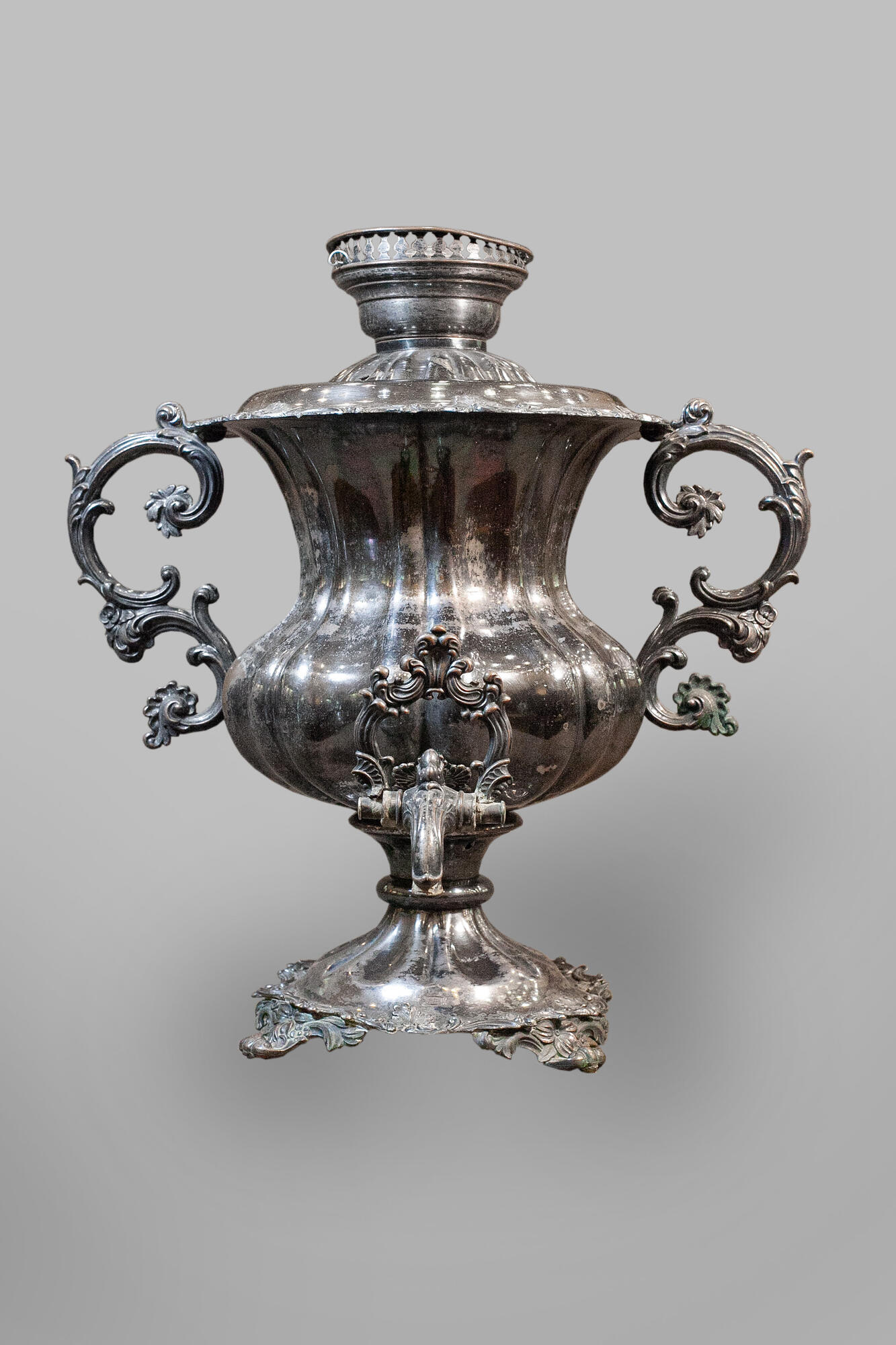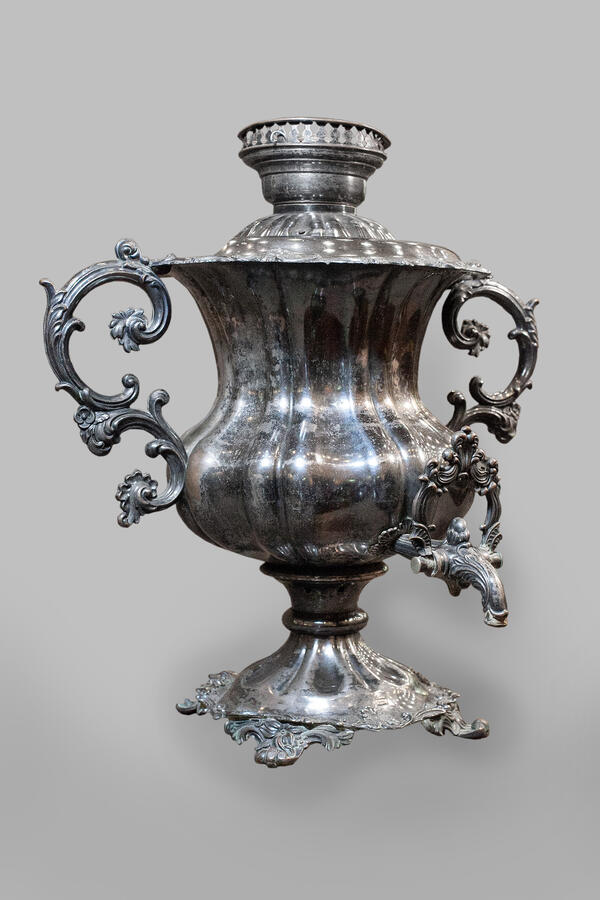A samovar is a metal container used to boil water and make tea. This vase-shaped samovar with an openwork design takes pride of place in the “Merchant’s Shop” section of the Diorama Museum and Exhibition Center. Such a samovar was quite expensive and could cost no less than a hundred rubles.
Boiling water in a samovar was very convenient. The resulting water was much softer, and the tea tasted better. Moreover, as a work of decorative and applied arts, a samovar was the centerpiece of a table and created a unique atmosphere. It is no wonder that the samovar was called the “Tableware General”. Heartfelt conversations over a cup of tea could always warm the soul of a Russian person and establish a sense of ease and tranquility.
Samovars in merchant shops attracted representatives of various social classes. However, they were purchased mainly by merchants who were wealthier than others. In the 19th century, the national archetype of an entrepreneur merchant was formed. The main household and family traditions of the merchants were developed, which later became the core of the class mentality. Traditionally, the entire family would gather around the samovar, and each member of the family drank five or six cups of tea.
Initially, samovars were quite expensive because they were considered a feature of the upper classes of society. Their design was strictly regulated. Each samovar shape had its own name, such as “egg”, “ball”, “glass”, “vase”, or “turnip”. Samovars also differed in the shape of their handles and taps. The samovar was used together with various beautiful accessories. Interestingly, the samovar was initially known under different names in each region: in Kursk it was called a “samokipets” (a self-boiler), in Yaroslavl — a “samogar” (a self-burner), and in Vyatka — a “samogrey” (a self-heater).
In the second half of the 19th century, Tula became the samovar capital of the Russian Empire, but Vyatka craftsmen also created their own original samovars. For example, the Vyatka master Nikifor Morozov built a unique wheeled barrel-type samovar for his sons, while the “Rooster” samovar, created based on the sketch of the famous Vyatka artist Viktor Mikhailovich Vasnetsov, received the highest award at the World Industrial Exhibition in Vienna in 1873.
Boiling water in a samovar was very convenient. The resulting water was much softer, and the tea tasted better. Moreover, as a work of decorative and applied arts, a samovar was the centerpiece of a table and created a unique atmosphere. It is no wonder that the samovar was called the “Tableware General”. Heartfelt conversations over a cup of tea could always warm the soul of a Russian person and establish a sense of ease and tranquility.
Samovars in merchant shops attracted representatives of various social classes. However, they were purchased mainly by merchants who were wealthier than others. In the 19th century, the national archetype of an entrepreneur merchant was formed. The main household and family traditions of the merchants were developed, which later became the core of the class mentality. Traditionally, the entire family would gather around the samovar, and each member of the family drank five or six cups of tea.
Initially, samovars were quite expensive because they were considered a feature of the upper classes of society. Their design was strictly regulated. Each samovar shape had its own name, such as “egg”, “ball”, “glass”, “vase”, or “turnip”. Samovars also differed in the shape of their handles and taps. The samovar was used together with various beautiful accessories. Interestingly, the samovar was initially known under different names in each region: in Kursk it was called a “samokipets” (a self-boiler), in Yaroslavl — a “samogar” (a self-burner), and in Vyatka — a “samogrey” (a self-heater).
In the second half of the 19th century, Tula became the samovar capital of the Russian Empire, but Vyatka craftsmen also created their own original samovars. For example, the Vyatka master Nikifor Morozov built a unique wheeled barrel-type samovar for his sons, while the “Rooster” samovar, created based on the sketch of the famous Vyatka artist Viktor Mikhailovich Vasnetsov, received the highest award at the World Industrial Exhibition in Vienna in 1873.






